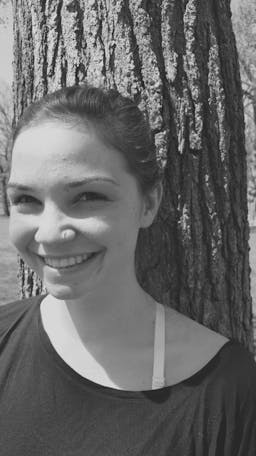Uniting the Public Through Poetry and QR Codes
May 28, 2019
Story
Born out of a struggle to publish my own writing, and faced with the dizzying bureaucracy of male-dominated, crony-capitalist power structures, QR codes offered an independent avenue to quietly broadcast written work on an international field, garnering attention from poets in Zimbabwe to bankers in Bangladesh to school children in Ecuador and beyond.
My classmates and I began ‘Voices in the Wilderness’ in 2014 when we were juniors at Emerson College. Our goal was to unite the public through visual poetry. What followed was a year of writing, critiquing, recording and mixing while trying to figure out how to engage the public with our words.
Three contributing writers and I threaded our poetry together to create an anthology that would eventually be read by voice actors, then mixed together by sound designers. Videos of neighboring wilderness areas were then edited over audio clips and posted online. The project was called ‘Voices in the Wilderness’ because it blended contrasting ideas of connectivity and chaos, how life is a balancing act between the two. Figureless voices narrated poetry about the ways in which we are all connected like trees in the wilderness. The poem’s contents raised awareness of universal problems like poverty, neglect and apathy. Each poem was an individual response to a common theme in an attempt to promote social change.
What was most unusual and exciting was the opportunity to collaborate with students from different majors. In a large studio space, I glanced around at faces I’d never seen before. Nervously, I explained the inspiration for my poem to acting students sitting across from me. They asked important questions and took diligent notes about the tone of each poem, and how they should be read.
At our school, fields of study were very segregated. Often, film students sought professional actors instead of acting students who might live on the same floor as them in the dorms. Meeting new students provided insight into other departments, such as the intricacies of sound design equipment. I also visited rooms of the school that I never knew existed like dance studios where acting students rehearsed for performances. Filming outside of Boston was an adventure in itself. Immersed in the calming presence of nature, I was able to take a deep breath and visualize my poetry narrated over slowly swaying branches or wind-tossed leaves. The only difficulty we faced as a group was finding a way to publish and publicize our finished works.
At the time, I was taking an art class and learning about the ways in which public art interacts with its environment and vice versa. Our final assignment was to create our own public art piece. The winning installation would be commissioned in downtown Boston. I realized that this was the perfect opportunity to present ‘Voices in the Wilderness’ to my class and to the public.
Once the website was created, I sought an approachable yet disruptive way for the public to access ‘Voices in the Wilderness.’ Approachable in the sense that it would appeal to an array of different listeners, and disruptive in the sense that it would be noticed in a crowded Boston setting.
I remembered an article I read about Icelandic audio book benches. Since Iceland has so many authors, they make books accessible on park benches. Passersby bring their own headphones and plug in to benches, listening until they’re ready to leave. With the wish to unveil our work to the public, we began brainstorming the logistics of putting our audio book on park benches.
My boyfriend thought QR codes would be an extremely accessible and cheap way for people with smart phones to access ‘Voices.’ QR codes were a fantastic technology just starting to emerge on everyday items. A QR code on a ketchup bottle at a restaurant led to a video game designed by Heinz. A QR code on a tree plaque in the park led to information about the tree’s etymology. Scanning QR codes with smart phones transported users into a secret world hidden in plain sight.
Passersby would scan the QR code on their smart phone and experience the audio book privately in a public realm. Over time, this idea transformed into a larger concept. To make the QR codes more visible, they would be placed on giant ears, cueing the listener to tune in with headphones. A giant ear in downtown Boston is peculiar and disruptive, but also playful and inviting.
'Voices in the Wilderness' was not commissioned in class, but the idea of reaching the public with our poetry was too exciting to ignore. After grueling conversations with the school’s administration, the work was commissioned by the Wilder Companies in a food court adjacent to Emerson in downtown Boston, where it stayed for one month. During its exhibition, over 300 people stopped their daily routines to participate in this new media art installation. I saw angry mothers with their children laugh, point and listen to stories from this ear. I saw new immigrants use the installation as a different means to experience the English language.
The work still lives on through its permanent web address and through guerilla art practices. We placed stickers with QR codes around Boston to promote awareness of our artwork and had one of the writers bring a QR code sticker with her on her next journey to Washington DC after graduating.
Most fulfilling was the collaboration of students, who donated their free time and energy to the project. Without the generosity and encouragement of the writers, voice actors and sound designers, ‘Voices in the Wilderness’ would not have come to fruition. Both Volume I and Volume II of the anthology continue to get views from listeners around the world.




